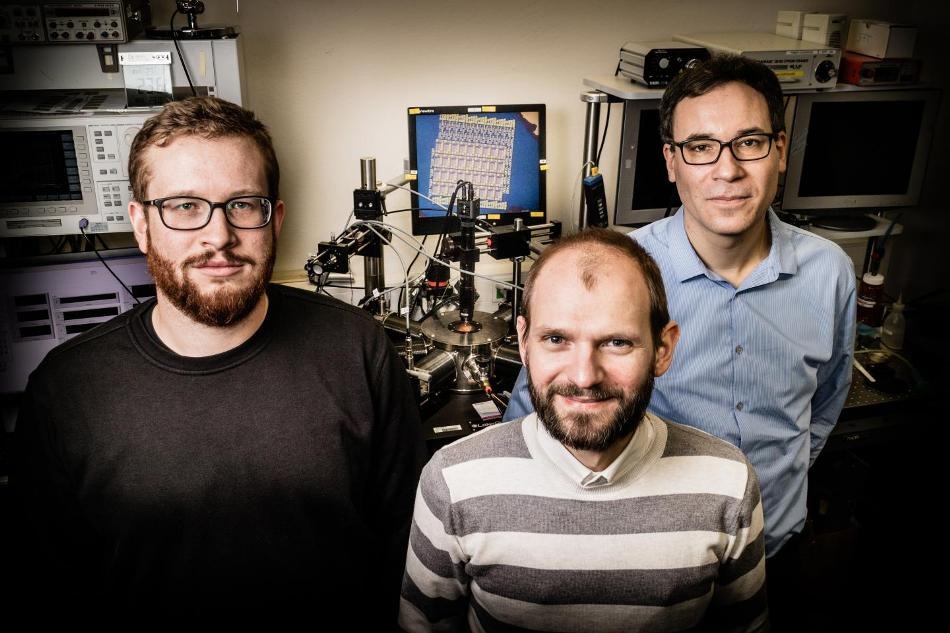Apr 12 2017
 Stefan Wachter, Dmitry K. Polyushkin and Thomas Mueller (f.l.t.r.). Credit: TU Wien, Marco Furchi
Stefan Wachter, Dmitry K. Polyushkin and Thomas Mueller (f.l.t.r.). Credit: TU Wien, Marco Furchi
Two-dimensional (2D) materials are considered to be very versatile, although - or often more precisely as they are made up of only one or a few layers of atoms. The best-known 2D material is graphene. Molybdenum disulfide, referring to a layer comprising of molybdenum and sulfur atoms that is three-atoms thick, is also included in this category, although, unlike graphene, it is available with semiconductor properties. Dr Thomas Mueller, from the Photonics Institute at TU Wien, along with his team is executing research into 2D materials by considering these materials to be a promising alternative for the production of microprocessors and various other integrated circuits in the future.
The whole and the sum of its parts
Microprocessors are considered to be an indispensable and ubiquitous component in the modern world. The continuous development of microprocessors has enhanced the availability of many of the things taken for granted these days, such as the internet, mobile phones and computers. Silicon is now slowly but definitely approaching its physical limits even though it has always been used in the production of microprocessors. 2D materials, including molybdenum disulfide, are considered to be potential replacements. Even though research into individual transistors, the most basic components of all digital circuits, made of 2D materials has been under way since graphene’s first discovery in 2004, success in developing more complex structures has been extremely limited. Till today, only individual digital components are produced using a few transistors. Much more complex circuits are needed in order to obtain a microprocessor capable of operating independently, and these circuits will have to interact in a flawless manner.
For the very time, this has been achieved by Thomas Mueller and his team. The result is a 1-bit microprocessor comprising of 115 transistors over a surface area of around 0.6 mm2 that can run simple programs.
Although, this does of course seem modest when compared to the industry standards based on silicon, this is still a major breakthrough within this field of research. Now that we have a proof of concept, in principle there is no reason that further developments can't be made.
Stefan Wachter, doctoral student in Dr Mueller's research group
However, the success of the research project was not only because of the choice of material. "We also gave careful consideration to the dimensions of the individual transistors," explains Mueller. "The exact relationships between the transistor geometries within a basic circuit component are a critical factor in being able to create and cascade more complex units."
Future prospects
It has been established that much more complex and powerful circuits with thousands or even millions of transistors will be needed for this technology to have a practical application. One of the biggest challenges still experienced within this field of research is reproducibility along with the yield in the production of the transistors used. However, both the production of 2D materials and the methods used for processing them further still remain to be in the very early stages. "As our circuits were made more or less by hand in the lab, such complex designs are of course pretty much beyond our capability. Every single one of the transistors has to function as planned in order for the processor to work as a whole," explains Mueller, stressing the huge demands placed on state-of-the-art electronics. However, the researchers are convinced that over the next few years the industrial methods could make room for new fields of application for this technology. Flexible electronics can be considered as one such example that is required for flexible displays and medical sensors. In this case, 2D materials are a lot more preferable than the silicon that is traditionally used because of its significantly greater mechanical flexibility.